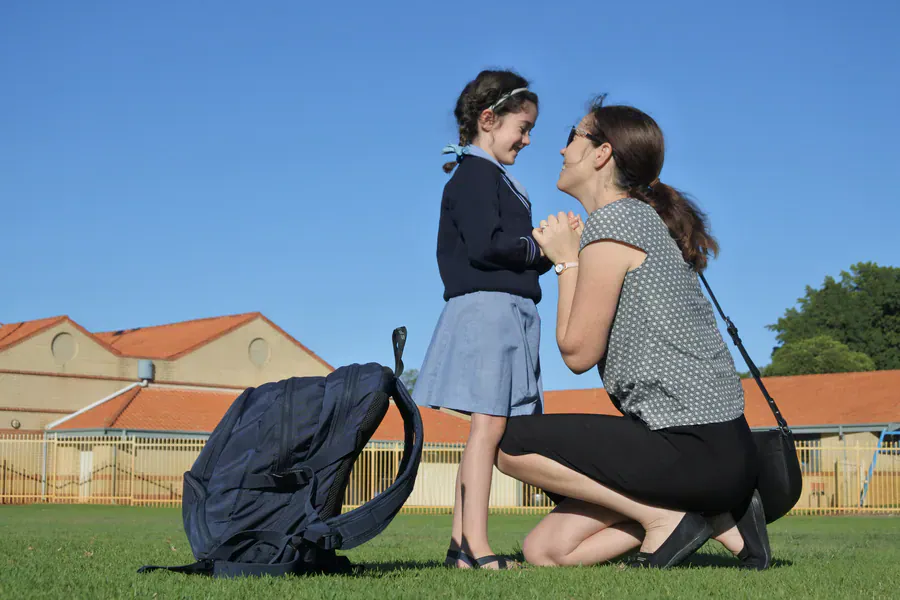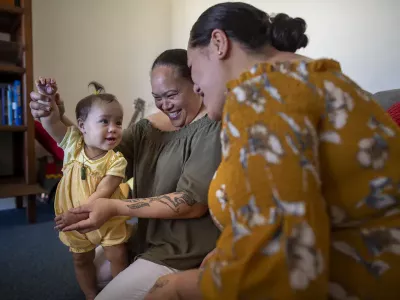Supporting Children Through Big Milestones: Five Tips

Nothing tugs at the heartstrings quite like sending a child off to daycare or pre-school or watching them go through school gates with a bag that seems twice their size.
Big milestones like these can feel like a real transition – for them, and you. It can be exciting, yet preparing and adjusting to changes can bring up a range of challenging moments.
Whether they’re a toddler or a teen, what can you do to help children adjust in the first weeks and beyond? Here are five strategies to keep in mind.
Pay attention to your own emotions
When children become more independent and self-reliant, it can stir up a mix of emotions for parents and carers. You might have some anxiety about your child starting school. Maybe you’re wondering if it’s normal to feel so worried. Other times, you could feel joy, happiness and pride. Or all emotions at once!
We know, and research1 shows, that parents’ attitudes towards school and transitions impact how children experience these events too. Learning to pay attention to how you react and respond, and the emotional tone you’re setting, can help children have a more positive experience.
Preparation and practice help with big milestones
There's a difference between taking a baby to daycare or a toddler to pre-school compared to helping school-age children and teens adjust. Regardless of their age or stage, a little preparation and practice can go a long way.
Knowing what to expect helps children to feel more comfortable with new experiences. It's a good idea to think about what you're already doing, and what else you can do, to expose them to their new environment.
Having one or two familiar faces can help babies and young children feel more secure. As they get older, it helps to make the most of orientation days and activities with other children. Giving them opportunities to "rehearse" what's going to happen – like getting dressed, packing their bag or practising the journey – can also help things to run smoothly.
Of course, there is such a thing as too much practice and preparation. When things don't go according to plan, try to see the lighter side. Tomorrow is a new day!
Establish routines and rituals
Daily routines provide children with a feeling of safety and can be a buffer when they’re experiencing changes outside home. Routines also help families become more organised, creating a sense of calm. Getting ready for the morning rush the night before is a good first step.
Rituals and little traditions can also provide a sense of stability and comfort. For example, a bedtime phrase, a big hug, a shared joke, a favourite meal, or a regular, fun activity together.
Listening
It’s not possible to always give children our full attention. Actively listening can make a big difference, though. Stopping what you're doing and giving your full attention sends an important message: you matter, and I care.
Sometimes the best opportunities happen when we least expect it. If you can, take a quick break and really tune in. By creating a safe and comfortable environment where they can talk to you about their ups and downs, you can help give them the tools they need to communicate, solve problems and work through challenges together.
Realistic expectations
Transitioning to daycare, pre-school or school can be tough for children and parents. Recognising that not everything will go according to plan can be freeing. Expect challenges such as changes in mood and tiredness and remember it's okay if things aren't perfect. Try to focus on what’s going well, roll with the changes and stay as optimistic as you can. In doing so, you’ll set an example of resilience to and help children learn how to adjust to big changes.
Let's talk about age-specific tips:
- Babies and toddlers thrive on routines and familiar faces and places. Meeting one or two educators and other little people can help them feel secure. Depending on their age, talk to your child about what will happen before it happens. Arriving and leaving might take a little (or a lot) longer as toddlers assert their independence. Preparing ahead and staying calm can help things go better.
- Some school-age children go through a period where they think school is great, then decide it's terrible after a few days or weeks. Be as ready as you can for ups and downs, listen actively and praise them when things go well. When children see parents feeling calm and confident, it can help them to feel similiar. And this gives parents a boost, which in turn benefits children – like a cycle.
- Research2 shows supportive relationships with parents are vital when children move from primary to high school. Sometimes it's hard to listen without wanting to fix everything, especially if your once-chatty child needs a little more space while stepping outside their comfort zone. Find relaxed opportunities to listen, understand and talk. Teens thrive on predictability too, even if it seems like the opposite! Encourage them to set up systems for keeping things organised, keep up routines and make plenty of time for fun.
And remember…
If you or your child are having a lot of trouble adjusting to a new environment, talk with educators, your doctor or other health professionals.
Positive strategies make parenting easier – learn ways to handle challenges confidently.
References:
1 Dockett, S., Perry, B., & Kearney, E. (2012). Family transitions as children start school. Family Matters(90), 57-67.
2 Kiuru, N., Wang, M. T., Salmela-Aro, K., Kannas, L., Ahonen, T., & Hirvonen, R. (2020). Associations between Adolescents' Interpersonal Relationships, School Well-being, and Academic Achievement during Educational Transitions. Journal of Youth and Adolescence, 49(5), 1057-1072. https://doi.org/10.1007/s10964-019-01184-y

